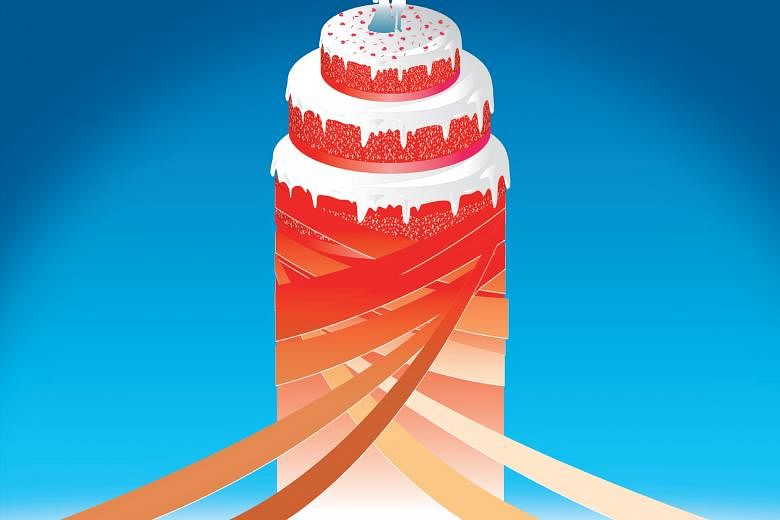The past two weeks have seen some debate online over just "how Malay" the aspirants for the upcoming presidential election are.
One common question that has been raised is why there are no "pure Malay" hopefuls stepping up, now that the law has been changed to reserve a presidential election for a race if it has not been represented in the post in the past five terms.
Tied to such thinking is the view that people can be neatly divided into pure Chinese, Malays or Indians, and that only such individuals should be deemed members of their community.
Such a view is misguided, although it is understandable that it continues to be held by a sizeable number of people.
All along, and long before independence, Singaporeans have bridged racial lines in school, at work, and in marriage.
But in the authorities trying to ensure that all races are represented in schools, HDB estates and Parliament, people may have inadvertently been viewed more in terms of their race than by their individual merits.
Perhaps a more optimistic indicator of how Singaporeans view race is the latest statistics on marriages and divorces, released two weeks ago, that show inter-ethnic marriages making up over one in five of last year's 27,971 marriages. According to the data , 21.5 per cent of total marriages last year were between members of two different races, up from 15.4 per cent in 2006.
-
33.9%
-
Percentage of marriages in 2016 in the Muslim community - where they are governed under the Administration of Muslim Law Act - that were inter-ethnic.
-
18.2%
-
Percentage of civil marriages in 2016 that were inter-ethnic.
Such inter-ethnic marriages were more prevalent among the Muslim community. These marriages made up one in three - or 33.9 per cent - of Muslim marriages, compared with 18.2 per cent of civil marriages.
Given this high proportion of mixed marriages, many of which involve one Malay partner, perhaps it is little wonder that many Malays are less seized by trying to find, let alone pin down, a "pure Malay".
By comparison, when Singapore became independent in 1965, 508 marriages - one in 20, or 5 per cent of all marriages that year - were between people of different races.
The growing trend of inter-ethnic marriages led demographer Saw Swee Hock to note in his book, The Population Of Singapore, 10 years ago: "It would appear that the past stabilised state of relations among the different races is now giving way to a very gradual advance in the level of assimilation.
"But this is still way behind the creation of a melting pot situation of mixed races," he added.
Sociologists attribute the rising number of inter-ethnic marriages to various factors, including the greater use of English as a common language and a large permanent resident and non-resident population.
There have also been more spaces for people from different races to mingle and get to know one another better - from schools to neighbourhoods and workplaces.
National University of Singapore sociologist Tan Ern Ser says these opportunities for people of different ethnicities to meet have also made them more cosmopolitan, open-minded and adaptable to cultural differences.
There is a growing number of Singaporeans with parents from two or more of the main ethnic groups, and this pool is set to grow with the rise in inter-ethnic unions.
Some see themselves as members of one group. Others see themselves as members of both their parents' communities. Yet others may feel more comfortable just identifying themselves as Singaporean. All are equally valid - and legitimate - responses.
On the one hand, some have cited the trend of growing inter-marriages and greater integration among the different racial groups in their call to do away with the long-established CMIO - or Chinese, Malay, Indian and Others - model of classification when it comes to housing quotas, or recording race on identity cards, or even the group representation constituencies.
On the other hand, racial classifications have governed how many Singaporeans see themselves, and continue to affect how our neighbours see us.
They also offer a way of seeing whether racism and discrimination are things of the past or if they are still very much with us today, and enable the authorities to track indicators such as the educational performance and well-being of minorities, including in areas such as health and housing type.
But policies are not set in stone, and changing demographics have seen adjustments being made.
For instance, in recognition of the rising number of children born to parents of more than one race, citizens of mixed parentage were allowed to reflect two races on their identity cards from 2011, if they so wished.
So someone whose mother is Malay, and whose father is Chinese, can change his race on his IC to Malay-Chinese or Chinese-Malay.
Or he can still choose to remain registered as Chinese or Malay. And mixed-race couples have the same options for their children.
However, as anecdotal accounts of couples in inter-racial marriages suggest, the fact that there are more inter-ethnic unions does not automatically suggest that racism or discrimination is decreasing.
Incidents of discrimination and casual racism continue to make the headlines from time to time, and are not easily quantifiable. But every incident is one too many.
It is why schools have, for the past 20 years, made an effort to celebrate Racial Harmony Day and remind students about such values as respect for and acceptance of differences.
It is also why I believe it is a good thing for Singaporeans to see and know that their presidents must come from all the main communities here, even as they represent all Singaporeans, regardless of race.
Some will, no doubt, continue to quibble over how "pure" these candidates might be.
They might want to ponder what Nominated MP Thomas Chua, now immediate past president of the Singapore Chinese Chamber of Commerce and Industry, said when he spoke during the debate on amendments to the Presidential Elections Act earlier this year. "Singapore is a multiracial society; interracial marriages and new immigrants will create the interchanging and integration of ethnicity, which is a positive development," he said.
"If there is an outstanding individual with superlative abilities who is willing to serve society, and whose parents belong to different ethnic groups, both ethnic groups would be proud of him or her."



